Yosemite is a treasure trove of natural beauty. We were blown away by spellbinding landscapes, smooth granite domes and majestic valley views during our 3 day Yosemite trip, and we think it has to be considered one of the crown jewels in America’s national park network. Just like the great writers and photographers who immortalized Yosemite before our time, we know you’ll be swept off your feet by the stunning waterfalls, monoliths, sequoia groves and hiking trails on display.
In this guide we explain everything you need to know about planning the perfect Yosemite itinerary for a first visit, including the park’s regions and entrances, what you can’t miss, and itineraries for one, two and three days. We recommend taking a look at our popular Yosemite guidebook if you want more help, but for now let’s start planning your trip!
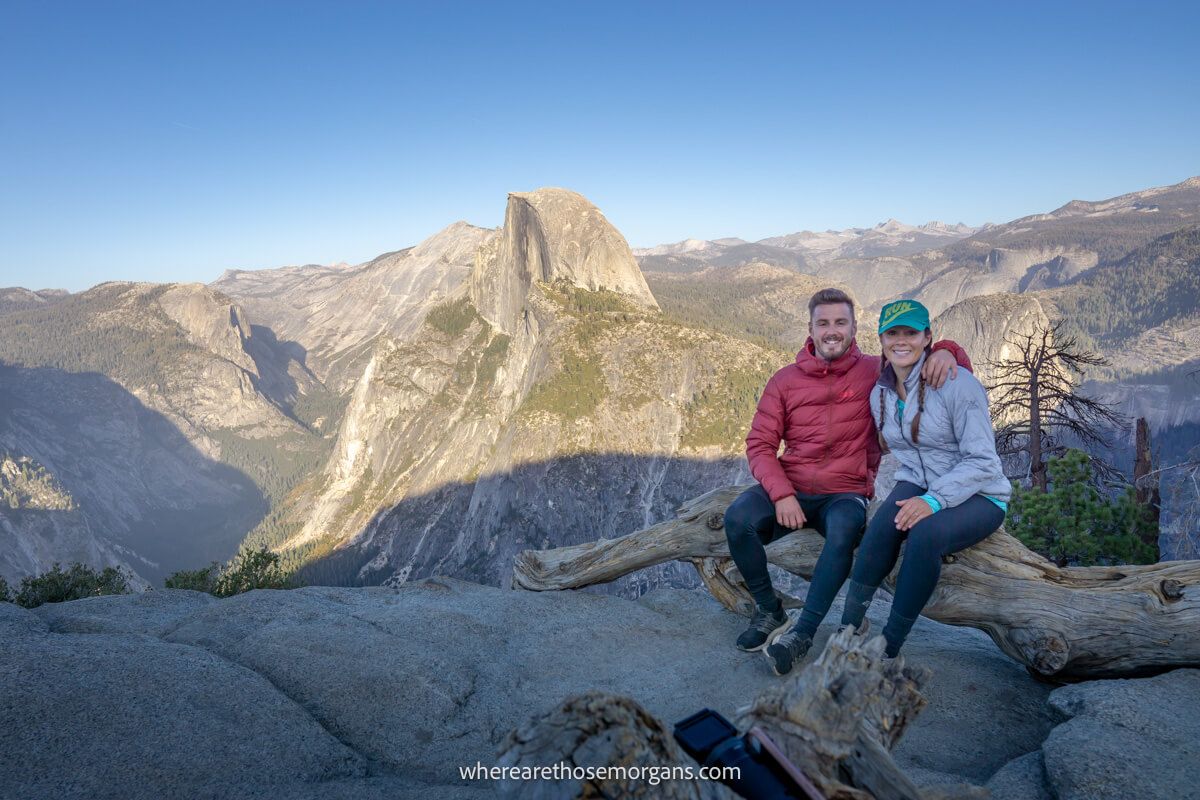
We visited Yosemite as part of our very first 3 month US road trip and it was a truly unforgettable experience. We’re hikers and photographers, so a place as adventurous and picturesque as Yosemite was inevitably going to become a favorite of ours. We didn’t win a Half Dome permit, but we hiked Mist Trail instead and it was still awesome. Plus, we were out with our camera for sunrises and sunsets to capture Yosemite’s unbelievable beauty during the golden hours.
We entered through the northeast and spent a day on Tioga Pass Road, then we spent a full day in Yosemite Valley, before finishing with half a day in the valley and half a day on Glacier Point Road before leaving through the south. It was an action packed 3 days and we were exhausted when we left, but we’re glad we filled up our Yosemite itinerary with activities because it’s a magical place. Read more about us.
Note: This article may contain affiliate links. If you make a purchase using one of these affiliate links, we may earn a small commission at no extra cost to you. Thank you!
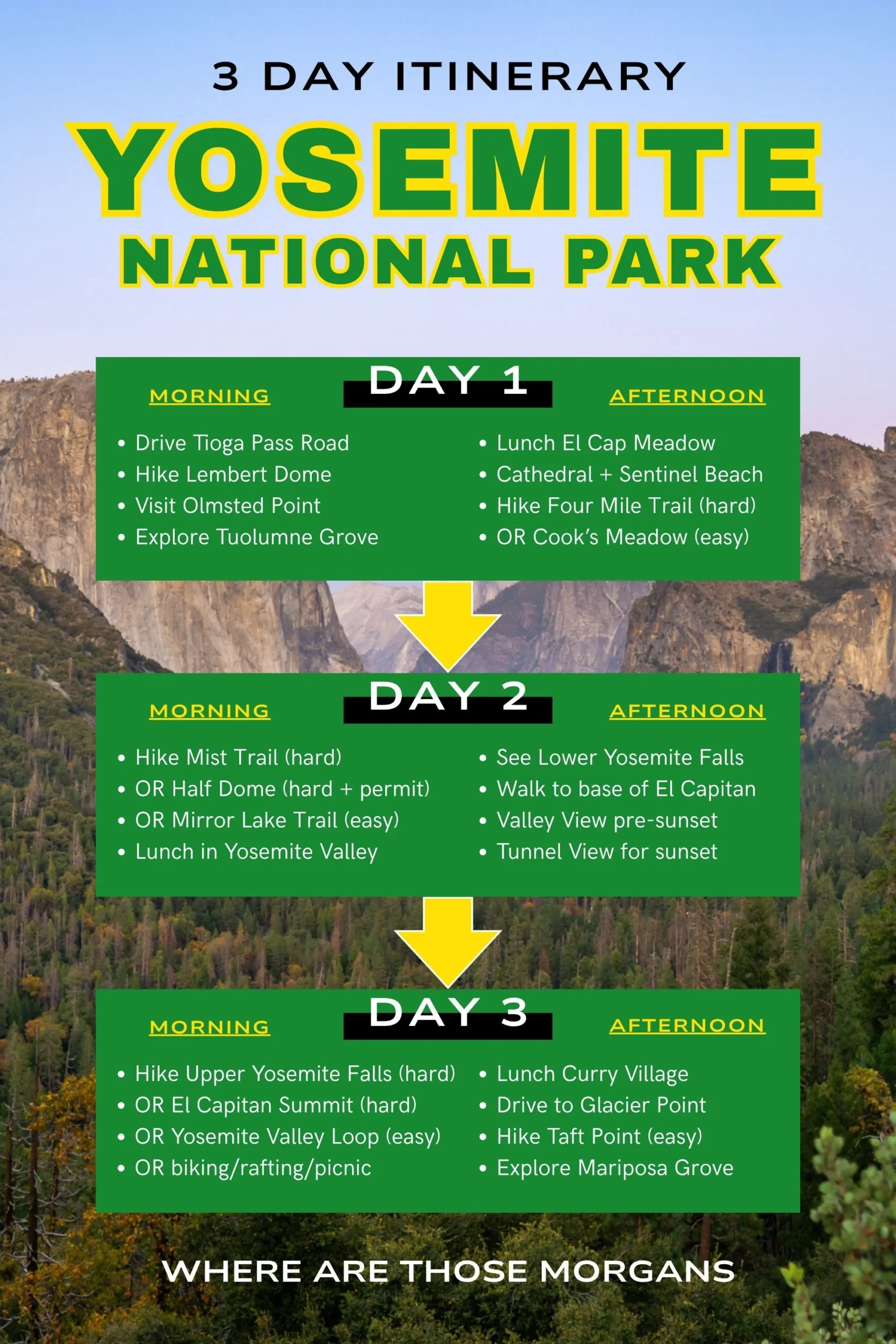
Park Information
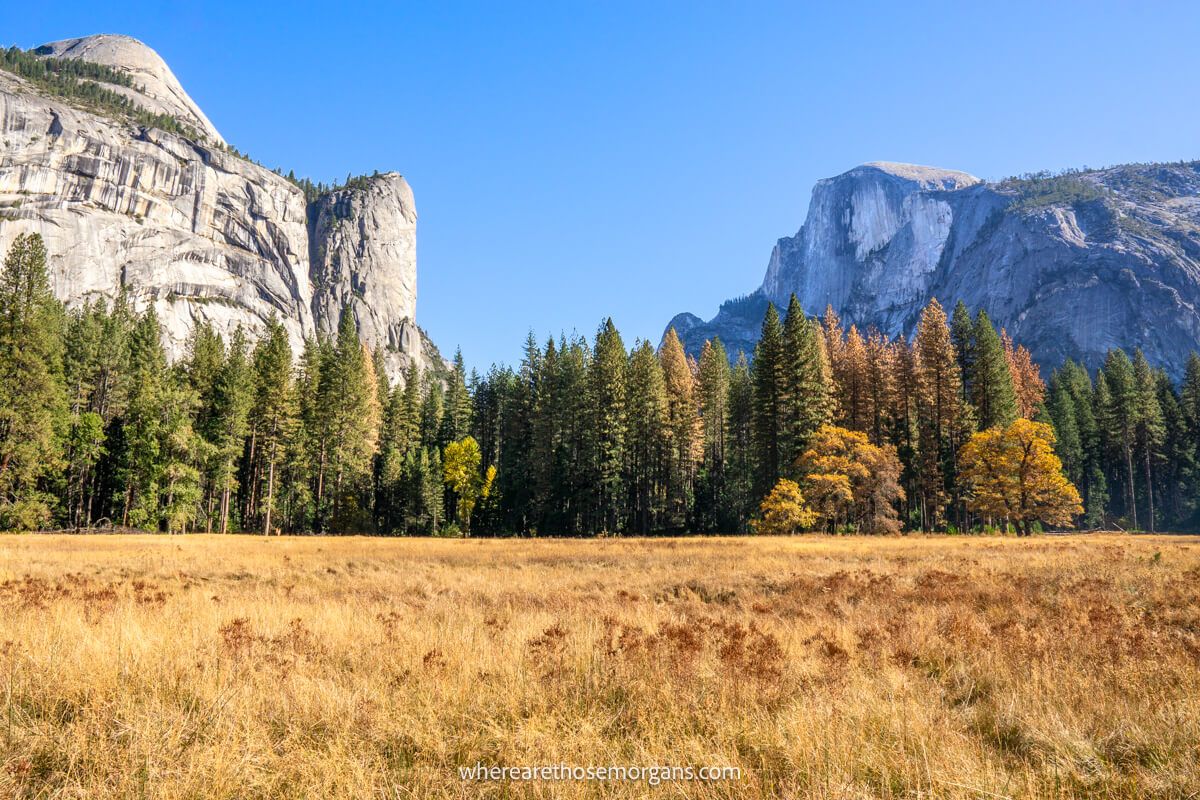
- Website: nps.gov/yose
- Hours: All day, every day
- Fees: $35/vehicle
- Permit: Required April-October
- Backcountry camping: Allowed with permit
- Accommodation: Hotels, lodges, cabins, campgrounds
- Annual visitors: 4 million
- Peak season: May-October
- Size: 759,620 acres
Yosemite is open year round but around 75% of the park’s 4 million annual visitors plan trips for the peak months between May and October. Entry to Yosemite costs $35 for a 7-day pass, which covers your vehicle and all passengers. Alternatively, you can gain free entry with an America the Beautiful Pass. You also must obtain a permit to enter Yosemite on certain dates between April and October.
What we love the most about Yosemite is that it has something for every type of visitor. It doesn’t matter if you’re a hiker, photographer, couple or family, you’re going to be wowed by what’s on offer for lovers of the great outdoors. El Capitan and Half Dome were even more impressive than we’d expected, and even just driving around Yosemite Valley made it worth the effort.
How Many Days Do You Need In Yosemite?
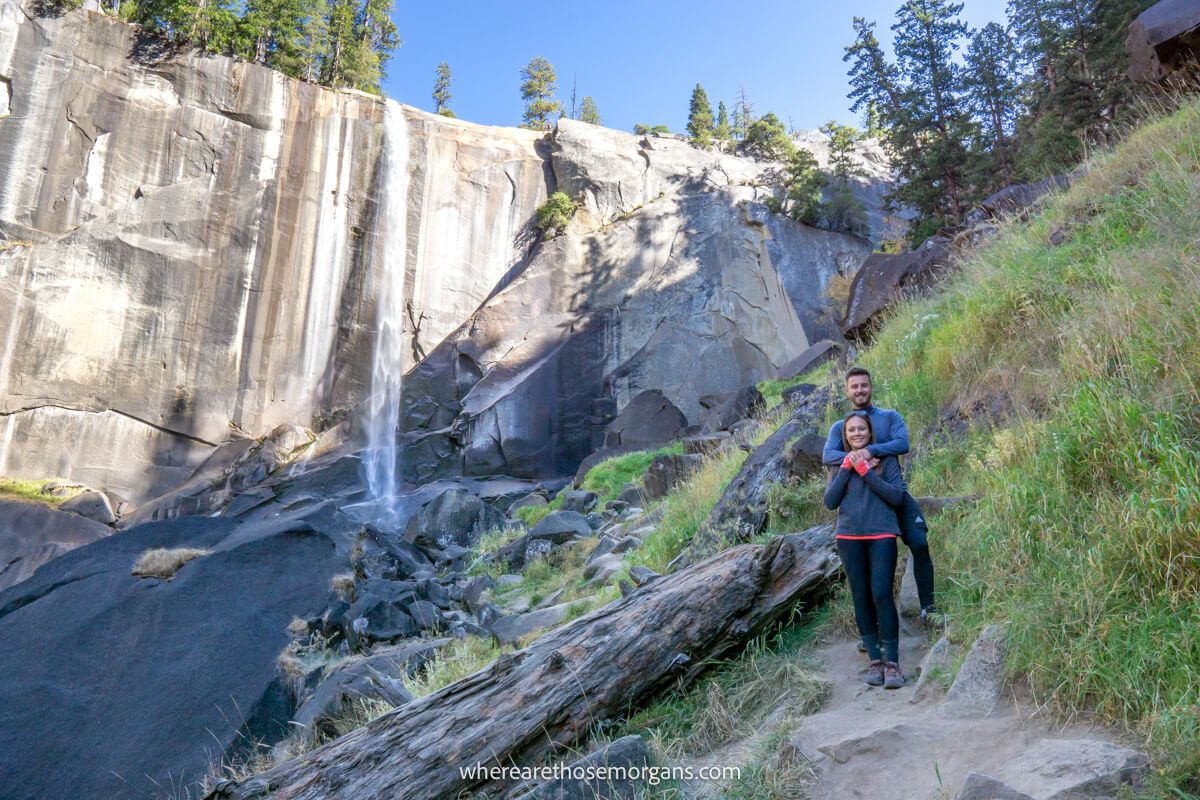
The first thing you need to decide is how many days you’ll spend in Yosemite. It might depend on factors like how many days you have off work, your travel budget or accommodation availability. But to answer the question, we think 3 days is the perfect amount of time for a first visit to Yosemite National Park, and that’s based on our own 3 day trip to the park.
Here’s the way we see it:
1 Day – You might be surprised by how much you can do with just one full day in Yosemite. We recommend either spending the day driving Yosemite Valley and Glacier Point Road so you can see more of the park, or choosing a few hikes in the valley. There’s a lot you’d miss but one day is better than no days!
2 Days – You can quite easily see Yosemite’s highlights in two days if you normally explore quickly or if you don’t plan to hike very much. We recommend focusing on the valley but also spending half a day in the south and half a day in the north. You’d see most of the park and keep costs to a minimum.
3 Days – We think three days in Yosemite offers the best balance between costs, how much you can see and going at a reasonable pace. It gives you time to hike some trails and see each of the park’s main regions, without costing too much or taking up too much time. When we go back for another visit, we’ll be planning a 3 day Yosemite itinerary.
4 Days – You can absolutely stay for an extra day if you prefer to travel slowly. You’d be able to explore at a much calmer pace, add in extra hikes or photo spots, and enjoy the landscapes for another 24 hours. But it’ll be getting very expensive by this point, it’s another day off work and unless you’re a big hiker we don’t think there’ll be enough to keep you entertained.
Regions Of The Park
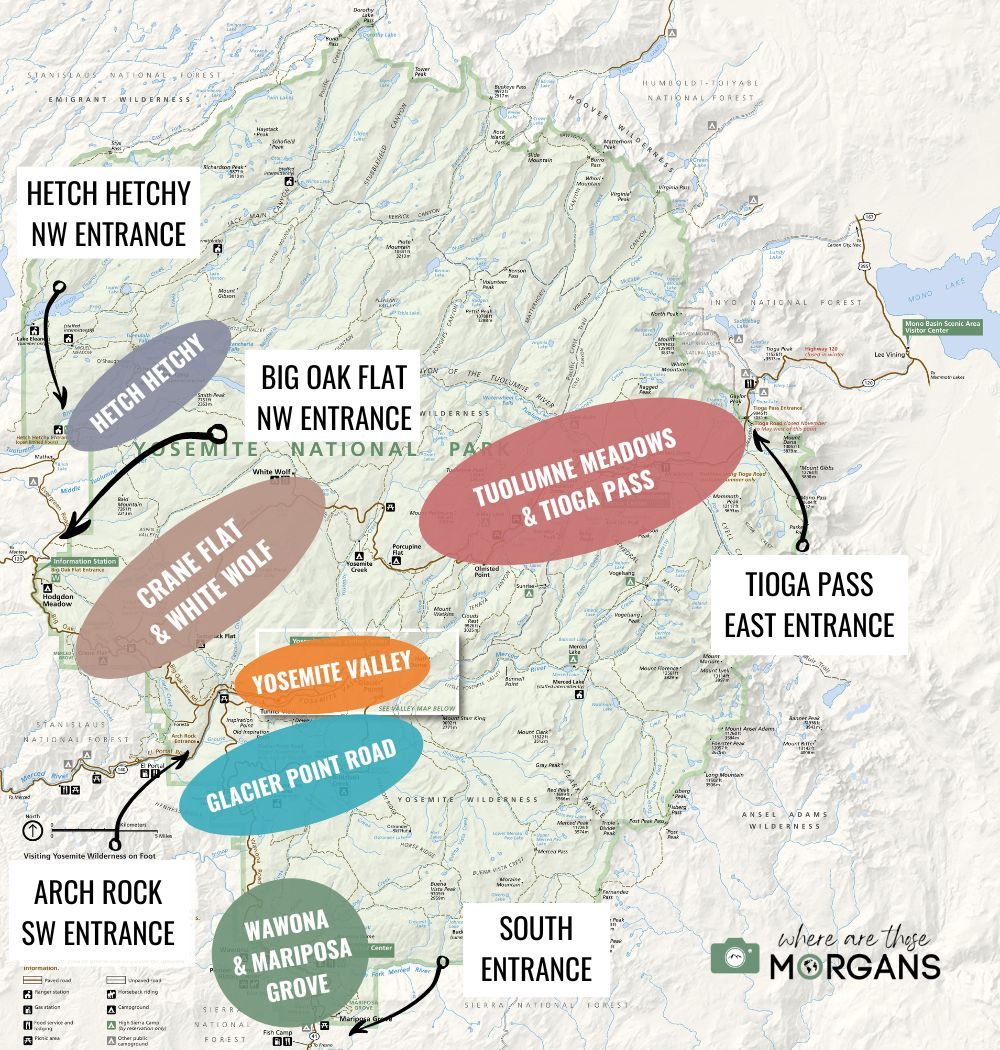
We don’t think Yosemite is the hardest US national park we’ve planned (that title goes to Yellowstone), but it’s certainly not the easiest either. Yosemite has 6 regions and 5 entrances, so you need to think carefully about what you want to see and which entrances you’ll use on the way in and out.
Here are Yosemite’s 6 regions (as you can see in our map above):
- Yosemite Valley
- Glacier Point Road
- Crane Flat and White Wolf
- Wawona and Mariposa Grove
- Tuolumne Meadows and Tioga Road
- Hetch Hetchy
If you’re planning a first time Yosemite vacation, we highly recommend you prioritize Yosemite Valley and Glacier Point Road. Next, add in Tuolumne Meadows, followed by Crane Flat and Mariposa Grove, and lastly Hetch Hetchy. We didn’t visit Hetch Hetchy, and we only recommend it for return visitors because it’s a long way out and it doesn’t have the same striking beauty as the main regions.
The reason we suggest planning a 3 days in Yosemite itinerary for your first visit is because it gives you enough time to easily visit Yosemite Valley, Glacier Point, Crane Flat, Mariposa Grove and Tuolumne Meadows at a reasonable pace. It might sound overwhelming, but it’s actually a lot easier than it seems.
Need help planning your trip to Yosemite?
Our expert guidebook can help you plan the perfect visit. No fluff, just top experiences, amazing itineraries, insider tips, our exclusive map and so much more.
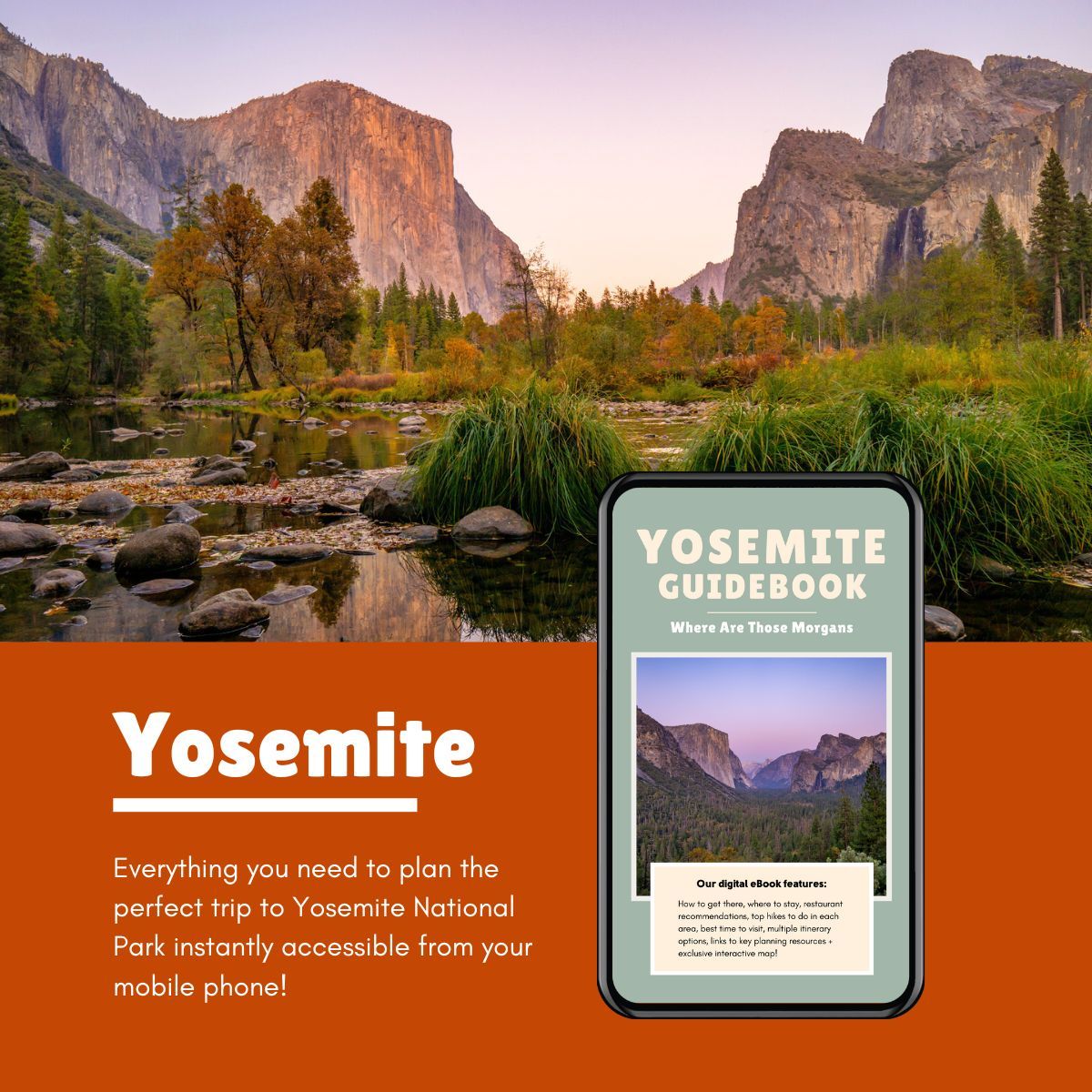
Entrances
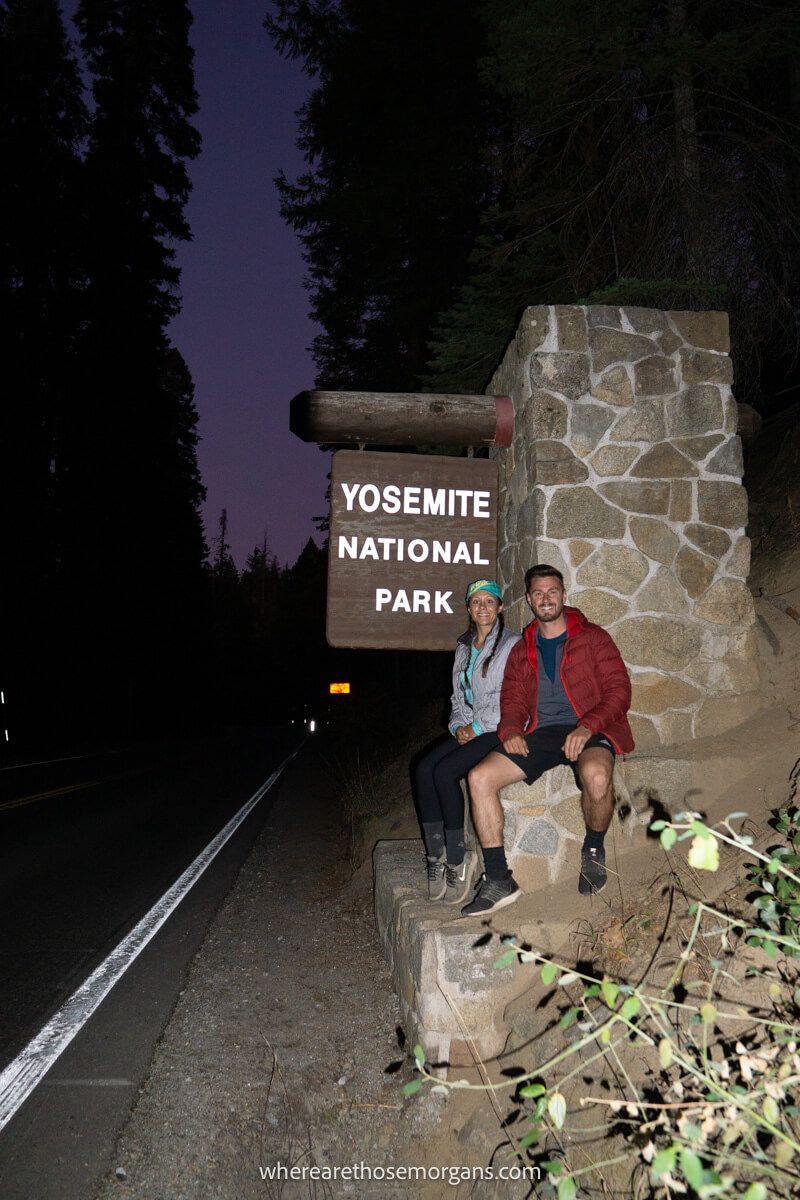
Yosemite National Park has 5 entrances:
- Tioga Pass (East) – Lake Tahoe, Death Valley
- Oakhurst (South) – Los Angeles, Sequoia
- Arch Rock (Southwest) – Mariposa, San Jose
- Big Oak Flat (Northwest) – Oakland, San Francisco
- Hetch Hetchy – Separate entrance to secluded area
We planned the most efficient 3 days Yosemite itinerary possible by entering the park through Tioga Pass and leaving through Oakhurst. This allowed us to see Tioga Pass, Crane Flat, Yosemite Valley, Glacier Point and Mariposa Grove in that order from north to south without having to drive back on ourselves at any point. But that’s only because we were already on a wider US road trip. We’d previously been in Death Valley and our next stop was San Francisco, so it worked perfectly.
It isn’t the end of the world if you don’t do it the absolute most efficient way because Yosemite isn’t enormous. We know most people are going to fly into and out from one of the major airports west of Yosemite, so your best bet is to use Big Oak Flat on the way in and Arch Rock or Oakhurst on the way out of the park. Tioga Pass Road is the only region of the park you’d have to drive back on yourself, if you decided to visit at all.
Travel Tip: The closest airports to Yosemite include Fresno, Reno, Oakland, Sacramento, San Jose and San Francisco.
Things You Can’t Miss
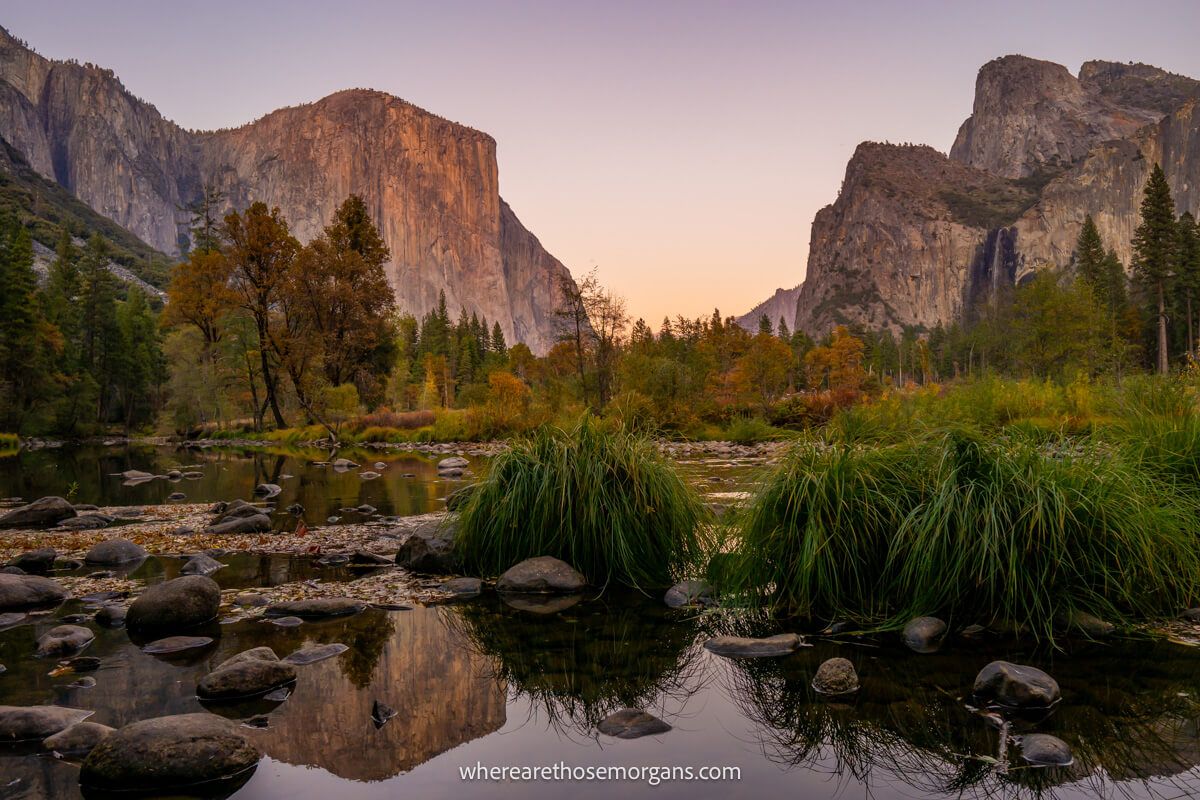
There are so many fun things you can do in Yosemite, including hiking, rock climbing, rafting, biking and sightseeing. But there are some things you absolutely shouldn’t miss when you visit, like visiting Yosemite’s stunning photography locations.
Here’s what we recommend:
Sightseeing:
Views:
Hikes:
As far as we’re concerned, they are the unmissable things to do any first time Yosemite itinerary. Make sure you take a good look around our Yosemite map at the end of this guide to see where these places (and more) are located.
Next, we’re going to walk you through itinerary examples for how to spend one day, two days and three days in Yosemite, incorporating many of these great views and hikes. Our itinerary examples are based on how we would plan our days. Note that none of the itineraries include hiking Half Dome. If you win a permit and hike Half Dome, it will take up a full day.
One Day Yosemite Itinerary
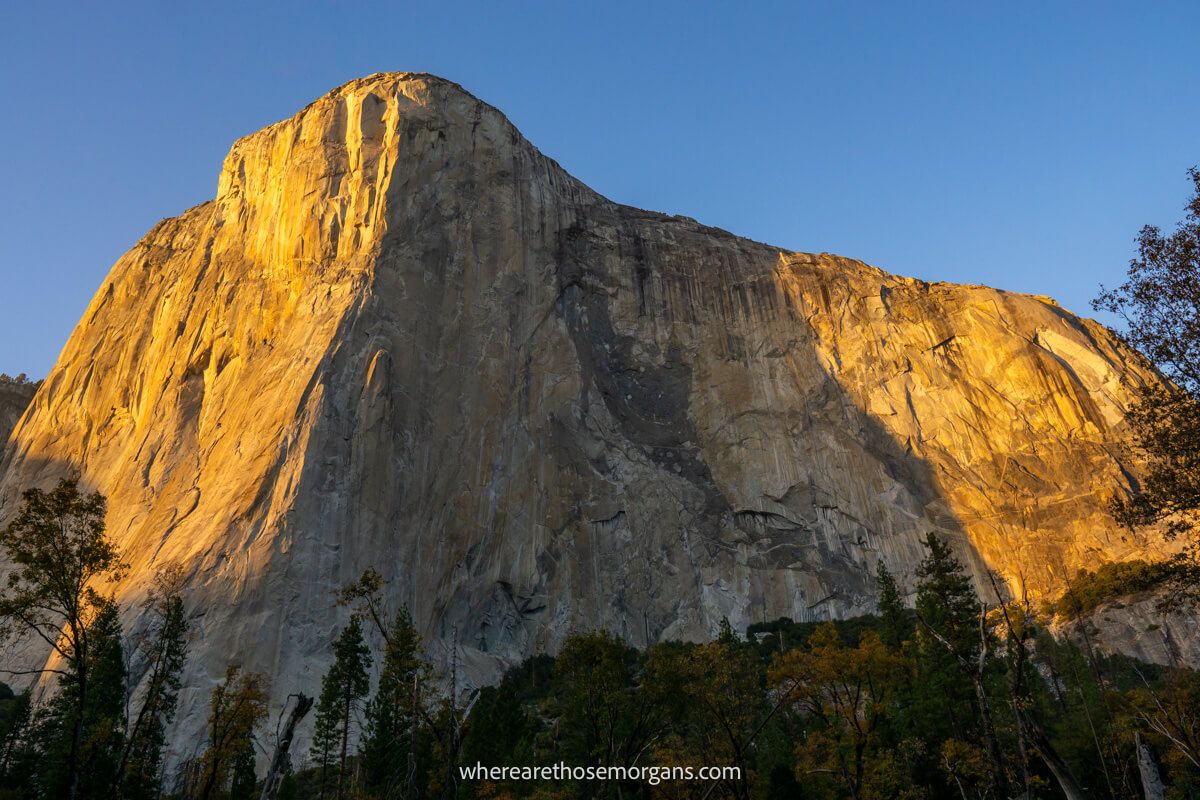
Morning:
With just one day you’ll need to be quick and get straight to the point. It doesn’t matter which entrance you use, drive straight to Yosemite Valley and start with stunning morning views from Tunnel View. If you can make it there for sunrise you’re in for a real treat. Next, park at the nearby Bridalveil Falls Trailhead and hike the short trail to see the waterfall from below.
Drive the one-way Yosemite Valley Loop and take the first left to see El Capitan from a gorgeous meadow. If you’re early enough you might see its famous walls lit up beautifully by the sun. Stop next at Cathedral Beach or Sentinel Beach to see trees and granite monoliths reflecting in the Merced River, then park at the main visitor center to take a look around.
Afternoon:
Hike Mist Trail to Vernal Falls or Nevada Fall depending on your hiking ability and time available. No matter how much of the trail you hike, stop at Lower Yosemite Falls next to see the tallest waterfall in North America. If you have time, stop at El Capitan and walk to its base so you can appreciate the scale of the climb. On the way out of the valley, make sure you stop at Valley View for a stunning vista. Finally, drive all the way up to Glacier Point to see sunset over Half Dome.
Note: Watch your time and maybe cut out the Mist Trail hike if you’d prefer to take things a bit slower. You’ll also have to drive out of Yosemite in the dark if you stay up at Glacier Point for sunset.
2 Days Yosemite Itinerary
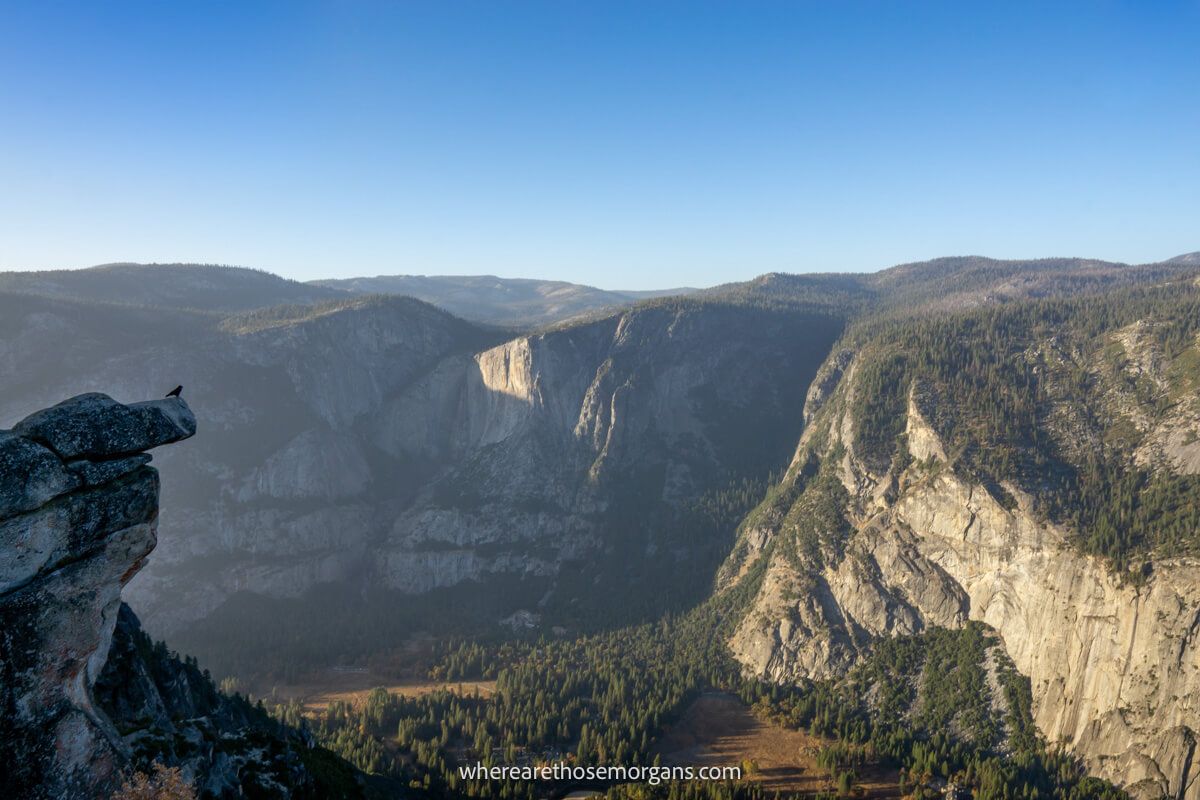
Day 1:
Start at Tuolumne Grove to see Giant Sequioas, then drive down into Yosemite Valley and stop at Bridalveil Falls. Next, stop at El Capitan Meadow and each of the pullovers along the loop road until you reach Mist Trailhead. Hike up to Vernal and Nevada Falls, then loop back around on John Muir Trail.
Stop next at Cook’s Meadow Loop. We took some great photos here so don’t miss it. Walk over to see Lower Yosemite Falls, then walk to the base of El Capitan. When it’s getting later in the afternoon, stop at Valley View and then head up to Tunnel View for sunset.
Day 2:
Get an early start and hike to Upper Yosemite Falls or go even further to El Capitan summit if you’re a very strong hiker. It’ll be amazing in the spring and early summer when water volumes are higher. This would take up your whole morning and not everyone will want to do this, so the alternative is to spend the morning walking around the visitor center, Ansel Adams gallery (we bought an astrophotography book here) and spend more time enjoying the beauty of Yosemite Valley.
Drive through Wawona Tunnel (stop at Tunnel View again) and head all the way up to Glacier Point to enjoy spectacular views over Half Dome. Stop at Taft Point for amazing views if you have time, then drive south and hike the Grizzly Giant Loop in Mariposa Grove to see Giant Sequoias.
3 Days Yosemite Itinerary
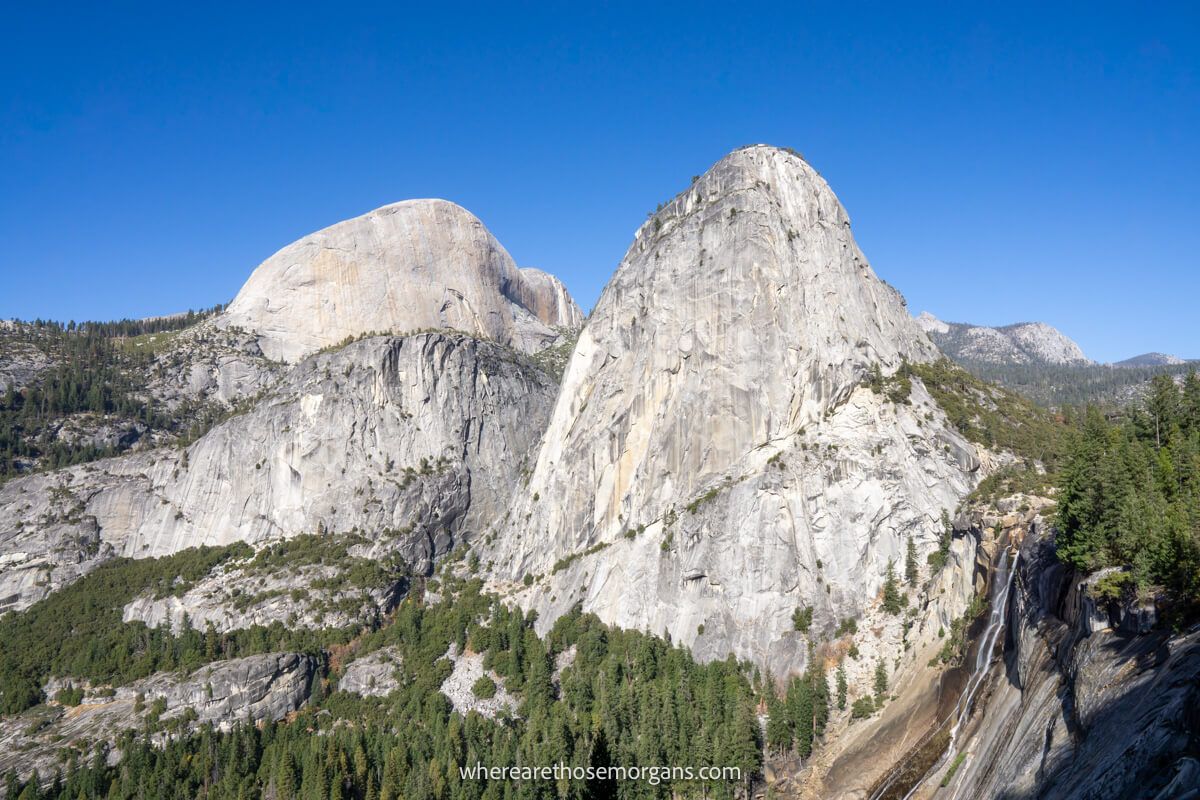
Day 1:
Start on Tioga Pass with a hike to Cathedral Lakes or a hike to Dog Lake and Lembert Dome. We had Lembert Dome to ourselves and it was awesome! Stop to see Tenaya Lake and Olmsted Point to see Half Dome. Next up is Tuolumne Grove to walk around Giant Sequoias, then drive down into the valley and walk to the base of Bridalveil Falls.
Stop at El Capitan Meadow, Cathedral Beach and Sentinel Beach, then hike Four Mile Trail to Glacier Point. This would take up the rest of your day and you’d need to be a strong hiker, so the more relaxing alternative is to walk around the visitor center, gallery and Cook’s Meadow Loop.
Day 2:
Start with a morning hike up Mist Trail to Nevada Falls, and loop back down on John Muir Trail. This really is worth doing if you can manage it, but it’s a steep hike. If you don’t do whole thing, just go up to Vernal Falls and back down. Or, you could hike an easier alternative called Mirror Lake Trail.
Next, walk around Cook’s Meadow Loop, see Lower Yosemite Falls and walk to the base of El Capitan. We stayed for 20 minutes or so to watch rock climbers taking on El Cap, which was cool. Later in the afternoon, head over to Valley View and Tunnel View for some truly stunning photo opportunities.
Day 3:
Spend the morning hiking the steep and challenging trail to Upper Yosemite Falls (strong hikers can continue to El Capitan summit). It’s a bit of a beast but it leads to incredible views. After the hike, drive all the way up to Glacier Point to see Half Dome (consider also hiking to Taft Point) and finish with a walk around Mariposa Grove to see Giant Sequoias.
If you don’t want to do the tough morning climb, consider walking the easy and scenic Yosemite Valley Loop Trail instead. Or you could try one of the other activities on offer like biking, rafting and ranger led programs. However you spend the morning, we recommend spending the afternoon at Glacier Point and finally Mariposa Grove.
Accommodation
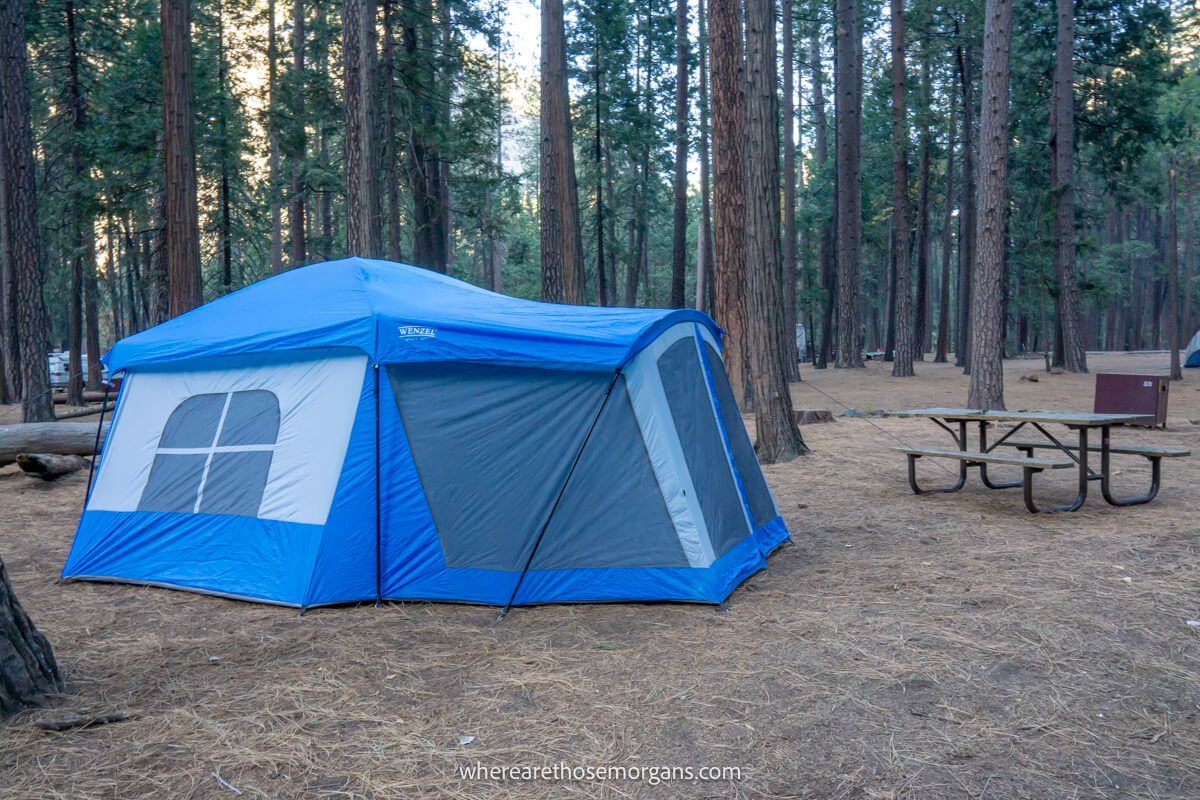
We think figuring out where to stay around Yosemite and is the hardest part about planning this trip. Firstly, the campgrounds are notorious for having no availability (use our 30 day free trial with The Dyrt to snag cancelled campsites). And secondly, the small villages and towns nearby don’t have many hotel options. Some of the park lodges in Yosemite Valley are reasonably priced but they book up very quickly. Plus, accommodation is expensive around Yosemite, which isn’t surprising considering the massive demand.
We can’t stress enough how important it is to book your hotels, lodges or campgrounds as far in advance as you can so you don’t lose out. Staying in Yosemite Valley makes life so much easier and your itinerary so much more efficient. But if you can’t get a room in the valley because they’re booked up or too expensive, try looking at Mariposa, El Portal, Fish Camp, Oakhurst or along Big Oak Flat Road for hotels.
Our experience: We were driving a longer road trip and we didn’t want to commit to specific dates too early, but that backfired in Yosemite because we ended up having very few lodging options. After leaving our hotel in Mammoth Lakes, we spent our first night in a yurt in El Portal, one night in Upper Pines Campground in our tent and one night at a hotel in Mariposa after leaving the park.
Best Time To Visit
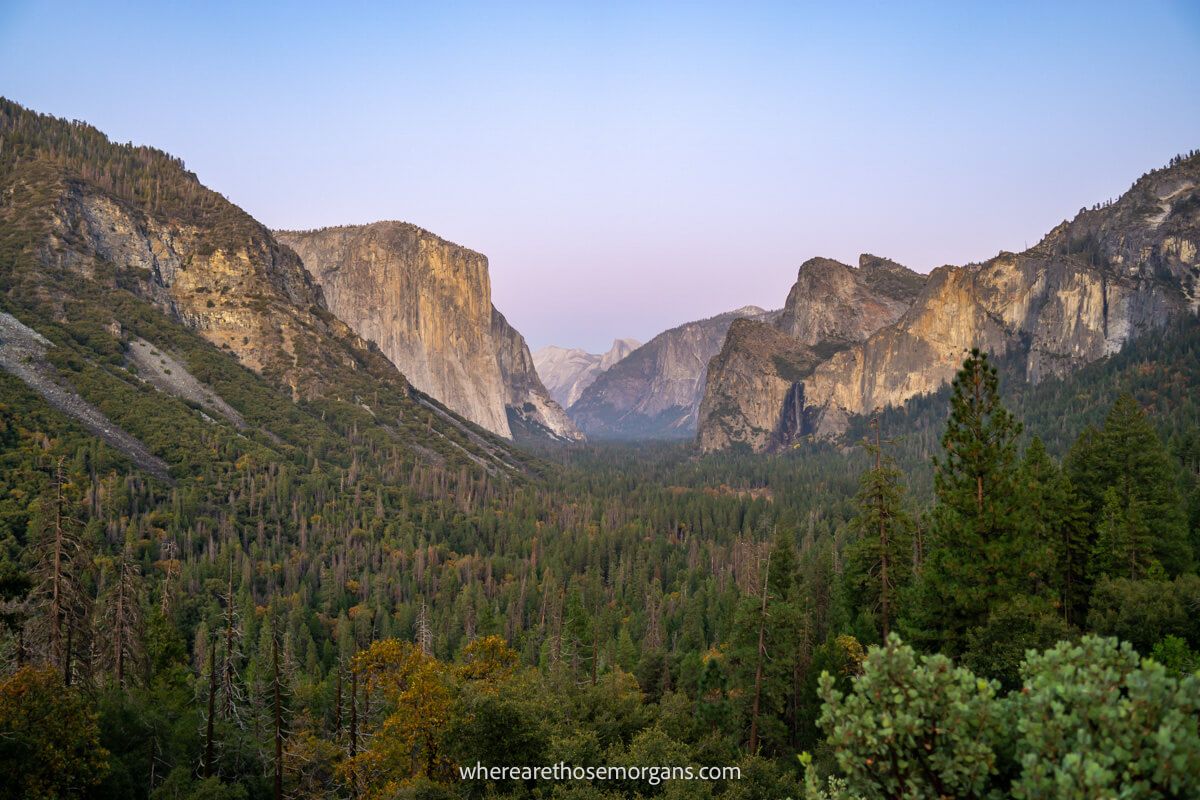
Close your eyes and point to your calendar. It doesn’t matter which date you landed on, Yosemite is going to blow you away. Every season is unique but has its own set of pros and cons. We visited Yosemite in October and it was incredibly colorful but there was barely any water flowing from the waterfalls.
Here’s what you need to know:
- Winter – Skiing, ice skating and snowshoeing, unique, fewer crowds, cold, Firefall in February.
- Spring – Powerful waterfalls, spring blooms, fewer crowds than summer, cool temperatures.
- Summer – Warm weather, overcrowded, very expensive, busy trails, traffic jams.
- Fall – Stunning autumnal colors, dry waterfalls, comfortable temperatures, less busy than summer.
Personally, we would avoid July and August if possible when Yosemite is inevitably going to be busy, hot and expensive. But we know families can only make trips work during holidays and we have our own on the way so we’ll have to contend with July trips soon!
All things considered we think May, June, September and October are the best months of the year to visit Yosemite to benefit from the best balance between crowds, costs, temperatures, activities and accommodation.
Yosemite Map
Click or touch the map below to activate. Zoom in and out, scroll around and get to know what’s on offer around the park before you visit.
Map key:
- Black – Entrances
- Yellow – Gas stations
- Purple – Accommodation options and areas
- Orange – Hikes, photo spots and attractions
You’ll notice we’ve included a lot more hikes, photo spots and attractions than we listed earlier in our section on what you can’t miss. If you have more time or you don’t plan to hike at all, add in some more of the places we’ve pinned in our map above.
We hope our 3 days in Yosemite guide helps with planning your itinerary!
Please let us know if you have any questions in the comments below.
Happy Travels,
Mark and Kristen
Enjoy this guide? Pin it for later!
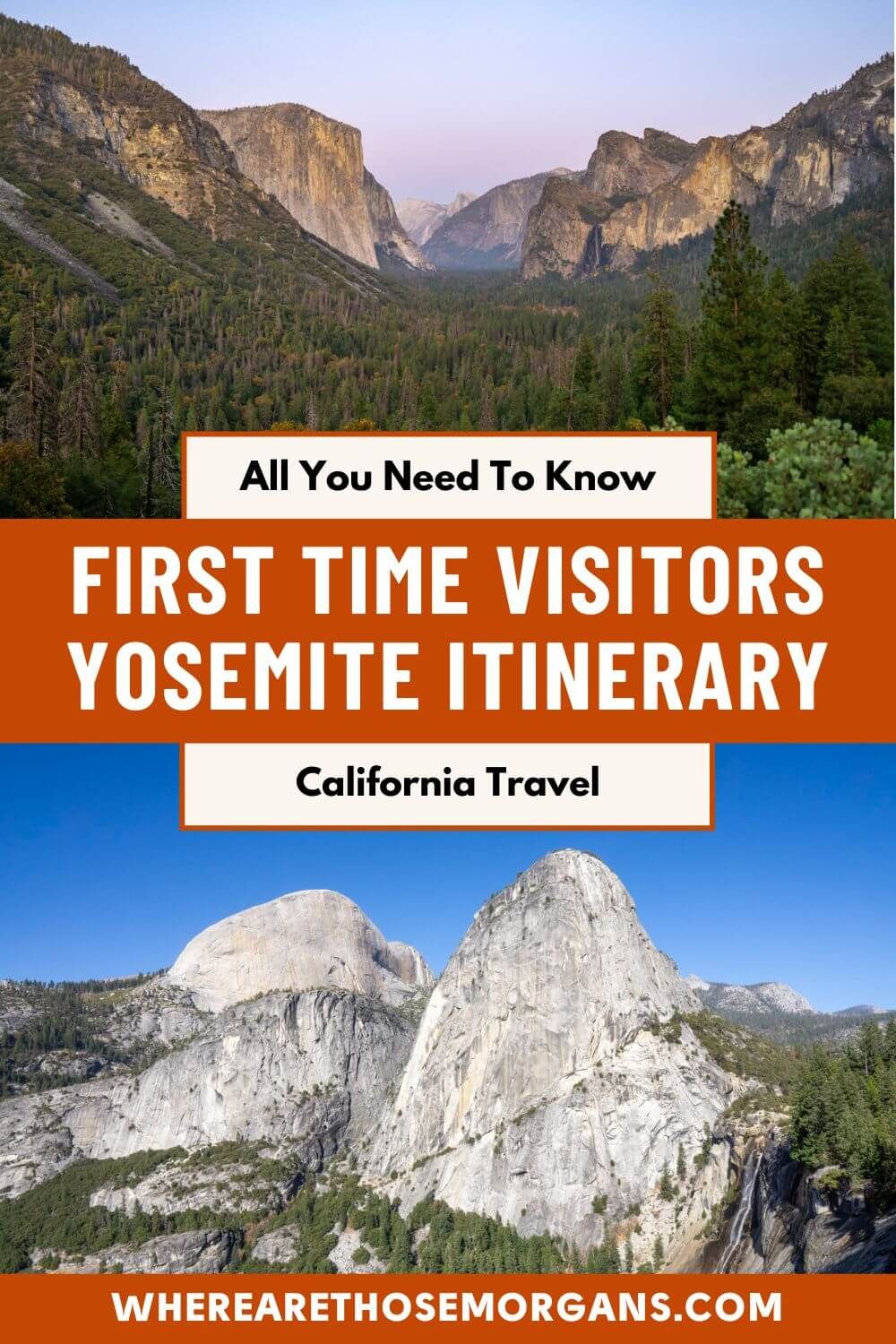
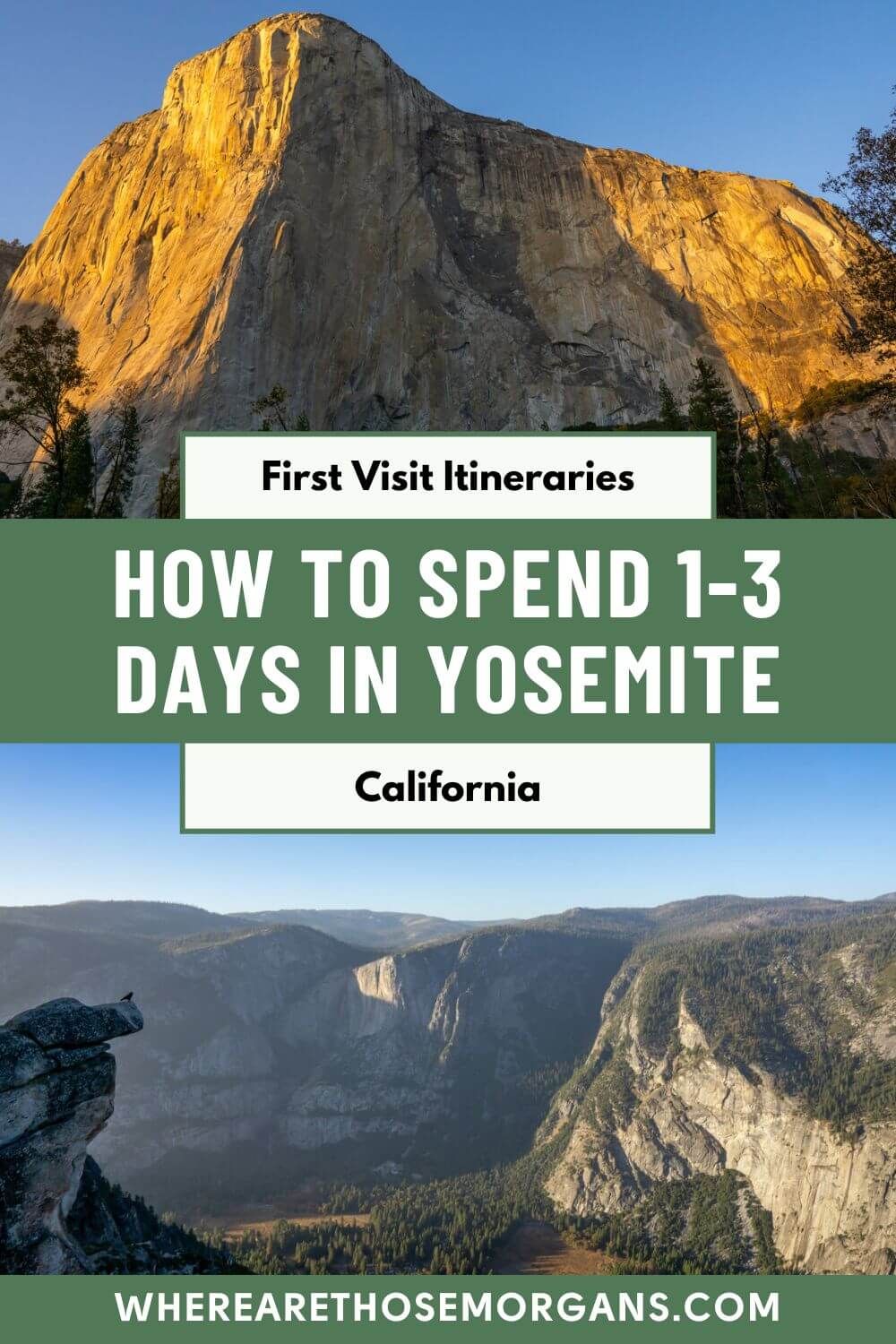
All Rights Reserved © Where Are Those Morgans, LLC. Republishing this article and/or any of its contents (text, photography, maps, graphics, etc.) in whole or in part is strictly prohibited.

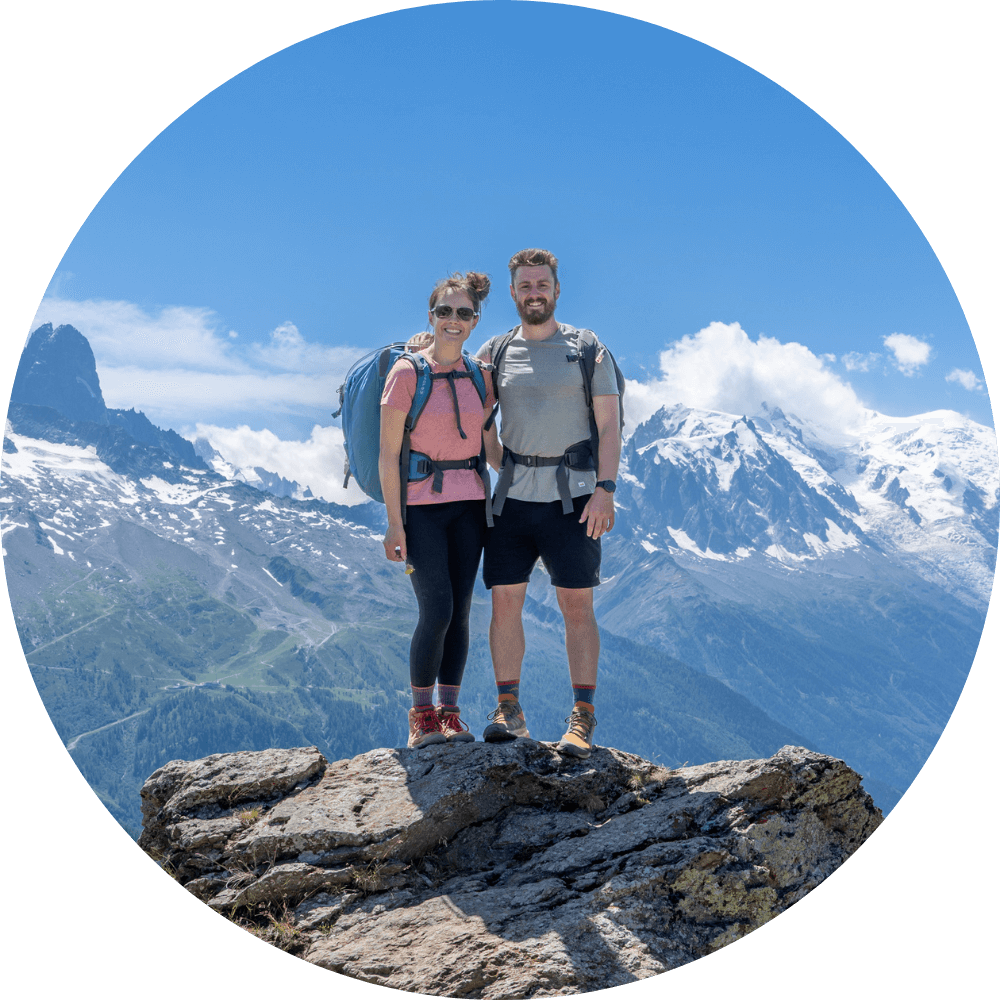
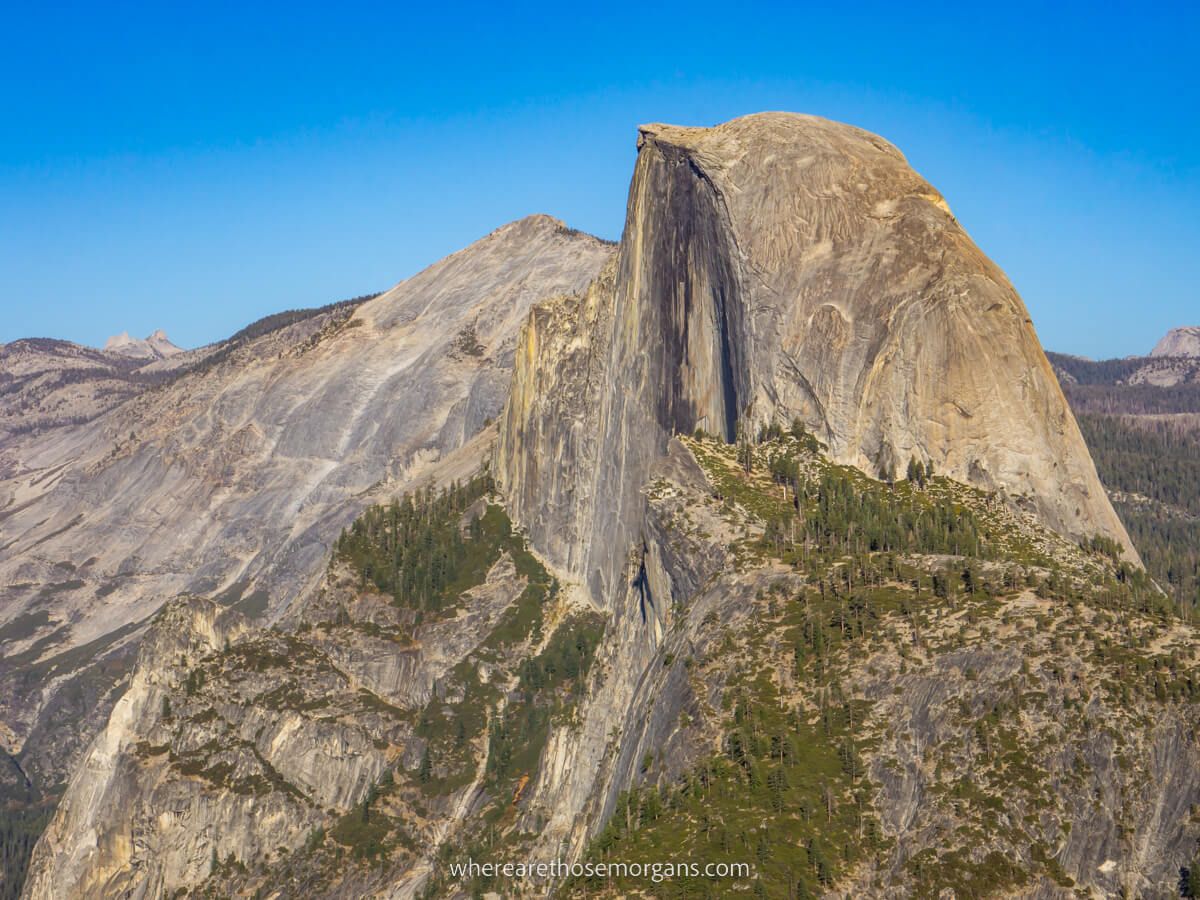
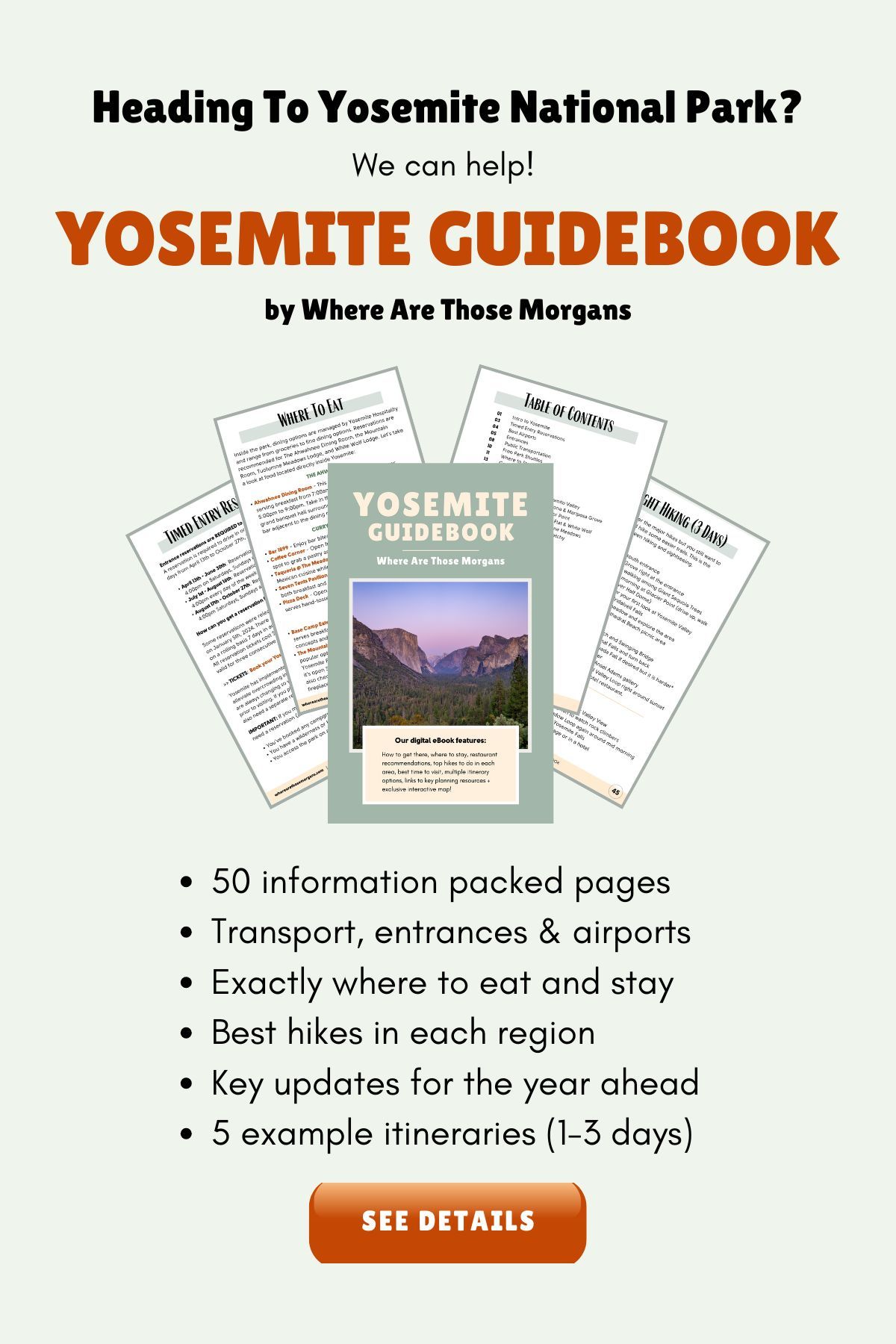
Hello Mark, I want to come from San francisco to yesemite for 2 days and then go to lake taho via tioga pass from October 17th to 18 ( at yosemite) and leave either on 19th or 20th to lake taho. I just need little help to let me know how to exit the park for tioga pass to Lake taho. I have seen your maps but i just needed littel help. YOU have done such a wonderful job of visiting yosemite in october…thank you Mark
Hi Anjana, we’re glad to hear you will be visiting Yosemite in October, the valley is beautiful and a little less crowded this time of year. You should be fine leaving Yosemite via Tioga Pass Road on October 20th (the earliest they have closed that road in the last 10 years is October 21 but it is usually November). You will exit Yosemite Valley on Big Oak Flat Road and take a right turn onto Tioga Road near Tuolumne Grove. That road will take you all the way out of the park to the northeast. Once you reach Lee Vining, take a left onto US-395 N heading for South Lake Tahoe. Have a great time!
Any chance you have a similar guide for Kings Canyon/Sequoia and Joshua Tree?
Hi Kyle, Unfortunately we do not, but we hope to have more Guidebooks published later this year. In the meantime, feel free to reach out with any questions 🙂
Great article!!
We are coming in from Monterey and staying 1 night in Mariposa… Which entrance and itinerary would be best suited to us please!
Thanks, Vish! If you are coming in from Monterey, the best entrance to use is Arch Rock entrance on El Portal Road. Assuming you have 2 days including travel both ways we would suggest spending the first day exploring all of Yosemite Valley after arriving, staying in Mariposa, heading back into Yosemite via Oakhurst and Fish Camp so you can do the Mariposa Grove of Sequoias and Glacier Point, before maybe hiking another trail in Yosemite Valley. We would then leave via El Portal Road to head back to Monterey. It is a lot to drive in just 2 days and staying in Mariposa means you have to drive back out and in again then next morning, but you will still be able to see the top sights easily, especially if you don’t take on any of the longer hikes. Let us know if you have any more questions and have a great trip!
Thank you so much!! This really helps to plan our 3 day trip to Yosemite! Great information and details!
Hi Shrenik, we’re very happy to help and hope you have a fantastic trip to Yosemite!
Enjoyed this so much! My granddaughter is a ranger at Wawona. Her mom and I are hoping to travel to Yosemite this summer. Thank you for all your travel tips!
Thank you Sylvia, Yosemite is a beautiful park – your granddaughter has a great job! We really hope you are able to make it this Summer and enjoy your trip!
An amazing national picture perfect park, almost everything you could wish to see in one place. Excellent pictures once again, keep it up.
Thanks Graham! Yosemite really is difficult to beat for landscapes and photography. Hope you get to use this Yosemite itinerary one day!